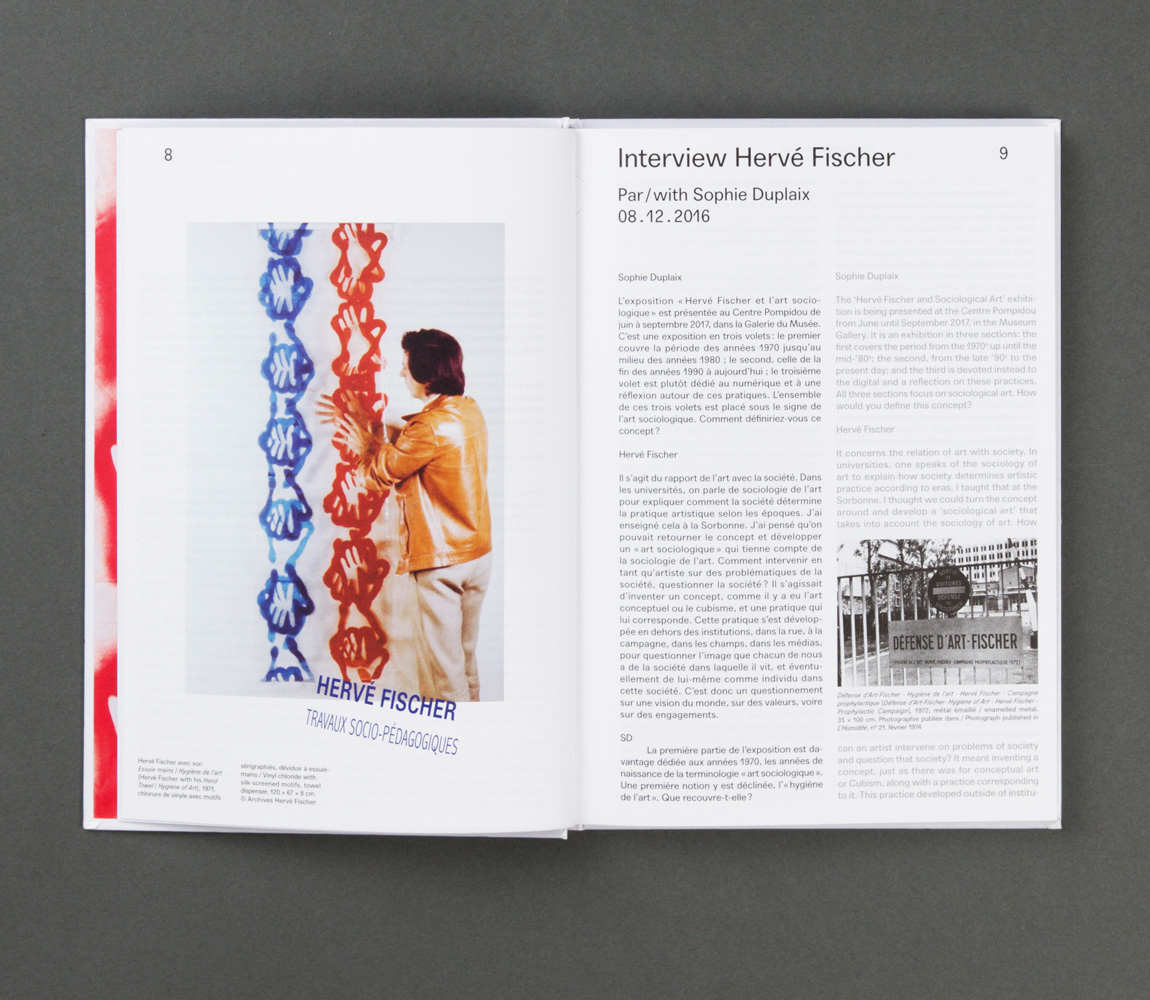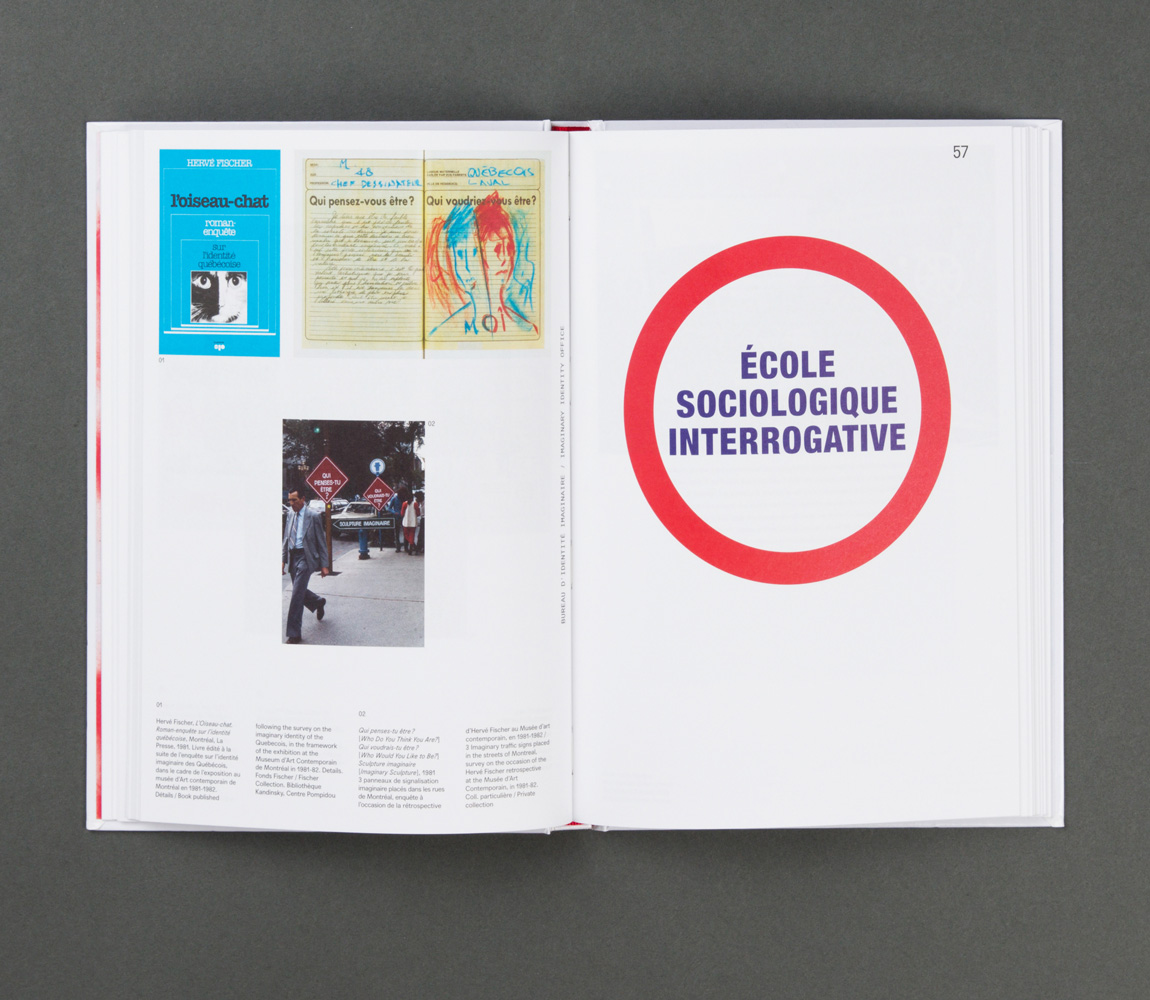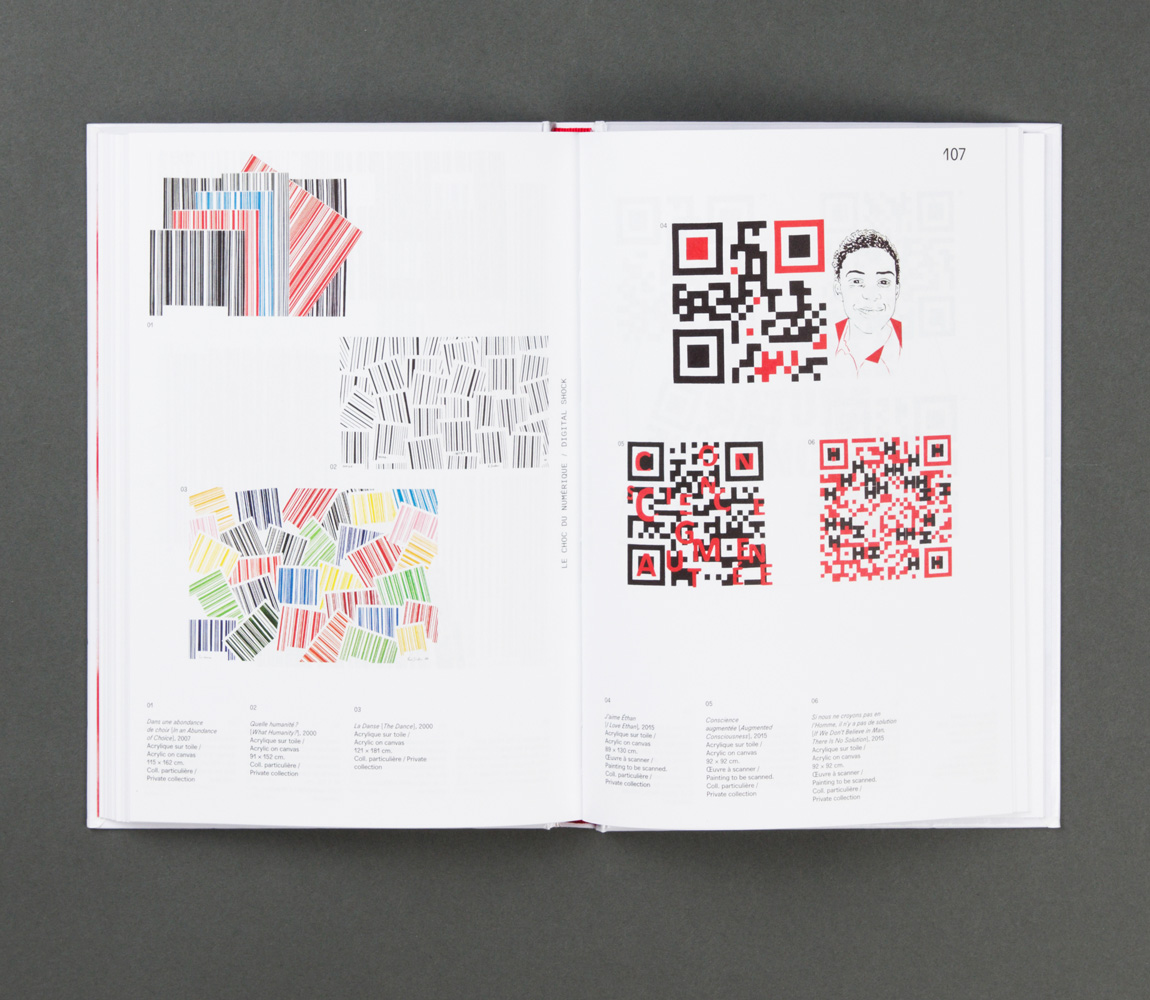Hervé Fischer and Sociological Art
Hervé Fischer, artist, sociologist, researcher and thinker, began to elaborate his concept of sociological art in the 1970s, at the time of the avant-gardes. He developed a critique of the relations between art and society and created his works outside of institutions, in the street, in the countryside and today on social networks, where he explores the use of digital practices.
“The ‘sociological art’ concept concerns the relation of art with society. In universities, one speaks of the sociology of art to explain how society determines artistic practice according to eras. I taught that at the Sorbonne. I thought we could turn the concept around and develop a ‘sociological art’ that takes into account the sociology of art. How can an artist intervene on problems of society and question that society? It meant inventing a concept, just as there was for conceptual art or Cubism, along with a practice corresponding to it. This practice developed outside of institutions – in the street, in the countryside, in the fields, in the media – to question the image that each of us has of the society in which one lives, and possibly of oneself as an individual in that society. So this is questioning a vision of the world, values, and even commitments.” (Extract from the interview with Sophie Duplaix.)
This book follows the three-section structure of the Hervé Fischer and Sociological Art exhibition presented at the Museum Gallery of the Centre Pompidou from June to September 2017. The first covers the period from the 1970s up until the mid-1980s; the second, from the late 1990s to the present day; and the third is devoted to digital technology and reflections on the new practices arising from social networks. All three sections focus on sociological art.



